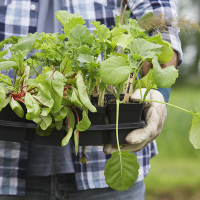Tips For Choosing Plants For Your Garden
Walking through the garden center of your local store, it is easy to get caught up in all the beautiful colors and textures of the plants. With so many choices available, you might fall into the trap of buying plants on impulse.
Instead of thinking about how they fit into your garden design, you start filling your cart with any plants that catch your eye. Then, when you get them home you realize that there is no place in your garden that is well-suited to the types, sizes or styles of plants that you bought.
To avoid this problem, it is best to be prepared before you head to the nursery. Instead of just winging it, you should take the time to consider the growing conditions in your yard.
Is your soil densely-packed or filled with sand? Do you have a lot of shade, or does your yard get sun most of the day? Pay attention for several days, taking notes about soil type, sun exposure and moisture levels for each of the areas you plan to plant.
If you really want your garden to flourish, you should also consider testing your soil. Most county extension offices offer soil testing for a small fee. Understanding the overall pH of your soil can help you determine which types of plants are best. Keep in mind that it is possible to alter the pH of the soil by adding certain amendments. However, it is almost always smarter to choose plants that grow well in the soil you already have.

When you go to the garden center or nursery, take your notes with you. Instead of picking and choosing flowers solely based on color and appearance, pay attention to which types of plants will thrive in your unique growing conditions. After all, there is no point in buying a beautiful plant only to have it die once you plant it because it can’t tolerate the conditions in your yard.
Once you get your plants home, it is time to arrange them. Before you start digging and placing them in the soil, it is a good idea to play around with different arrangements. With the plants still in their pots, experiment with different planting arrangements. Try grouping several plants in small clusters, or spreading them out in even rows.
Pay special attention to the height of each plant when it reaches full maturity. Taller plants should go in the back of your flower beds, while shorter plants should go up front. Once you have an arrangement you like, you can go ahead and put the plants in the ground.
Taking the time to understand the growing conditions throughout your yard and garden can help you choose plants that will flourish. Rather than wasting money on flowers that are poorly suited to your location, you can focus on buying plants that are guaranteed to thrive. With careful planning and attention to detail, you can have a show-stopping garden that will add beauty and depth to the outside of your home.





